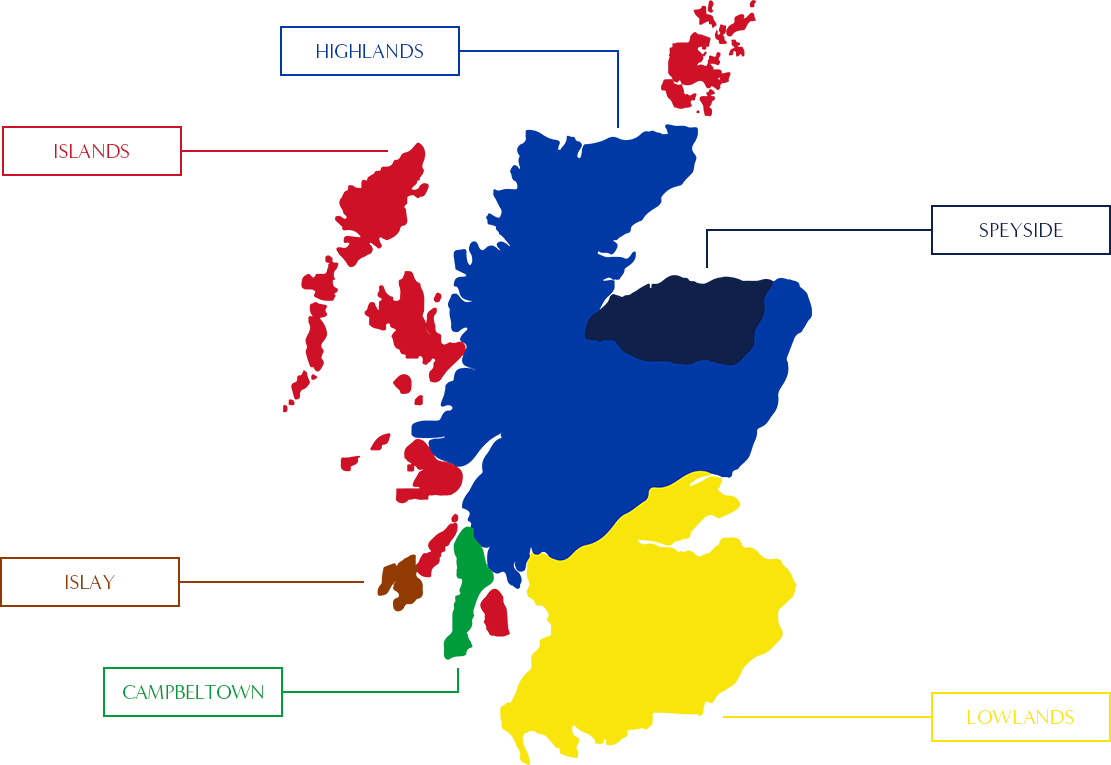

The features of a whisky are determined by the area in which it is produced. We believe there is a whisky for everyone’s palate, having tasted whisky from every region of Scotland and managed to persuade even the most adamant whisky sceptics. If you could put us to the test, that would be great.

Highlands
Highland whisky is the world’s largest whisky region, with flavours ranging from flowery to light peat to delicious sherry. The island is divided into four sub-regions, each with its own distinct whisky flavour. Single malts from the Northern Highlands are recognised for their sweet, full-bodied flavour. Eastern and Southern Highland whiskies have a softer mouthfeel than Northern Highland whiskies. On the other hand, the Western Highlands have a mild coastal flavour. When it comes to Highlands whiskies, keep in mind that each drop should be delicate and sophisticated.
Highland characteristics include: Fruit Cake, Malt, Grassy, Dried Fruit and Mildly Smokey

Speyside
Speyside accounts for more than 60% of all Scottish single malt whisky production. This is Scotland’s driest and hottest area, making it ideal for farming. The Spey River is also a great place to find whisky. Although some Speyside whiskies are mildly smoked, the vast majority are full-bodied and sweeter. Since peat is so precious, a smokey dram is uncommon. The region is still famous for its well-balanced single malts, making it an excellent location for whisky beginners, experts, and everyone in between.
Speyside characteristics include: Honey, Floral, Apple, Vanilla, Oak, Full-bodied and Dried Fruit

Islands
Skye, Arran, Mull, Jura, Lewis, and Orkney are all part of the whisky area. Every island has its own flavour character, ranging from mild, fruity, and lemony to extremely peaty. The islands are not often recognised as a whisky region, and they are sometimes misinterpreted as being part of the Highlands rather than their own. The islands’ primary distilleries are normally varied but, they do have some consistency, such as the incorporation of saline and coastal marine flavours, which makes them distantly similar to Islay single malts. Aromas such as herbal, sweet, citrus, and nutty are among the features.
Islands characteristics include: Brine, Oily, Spicy and Sweet













